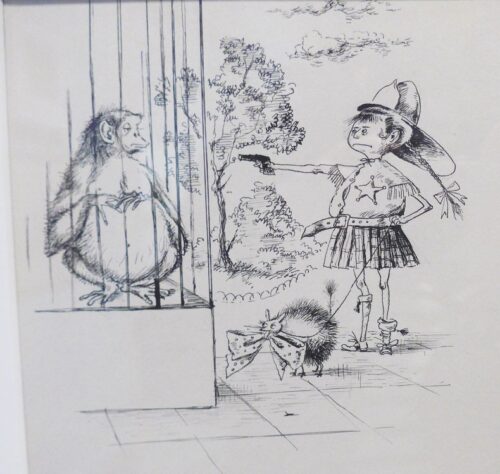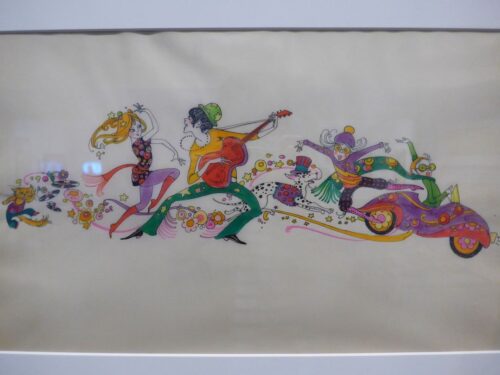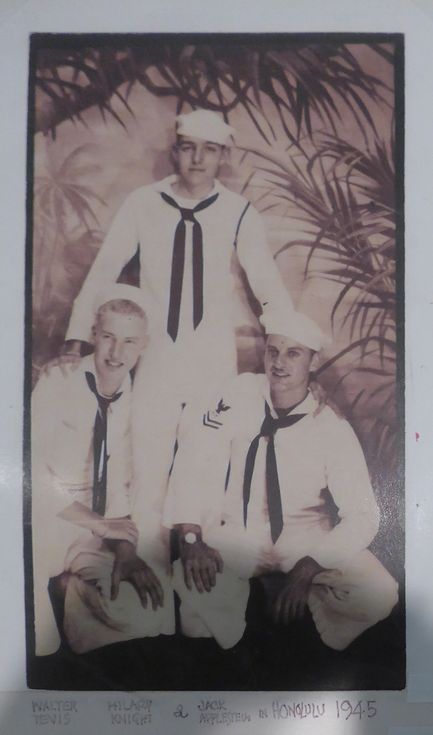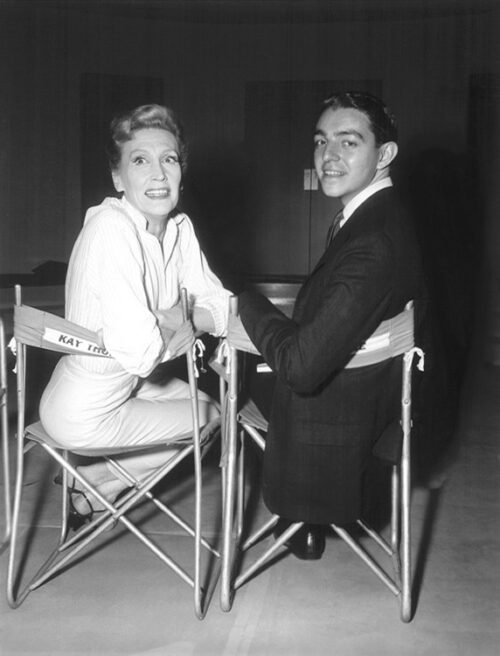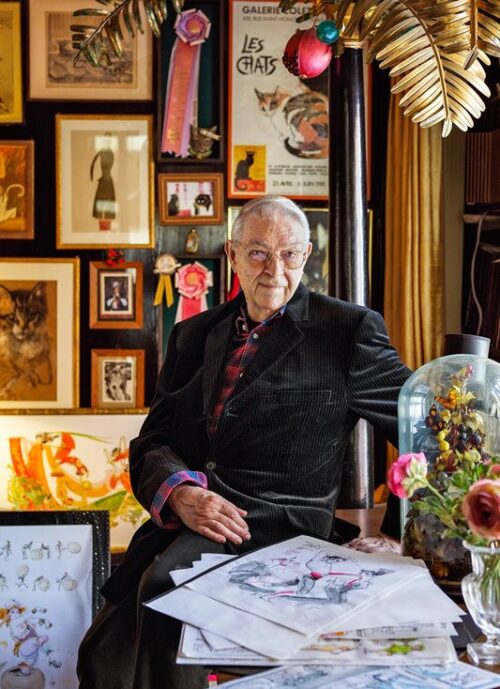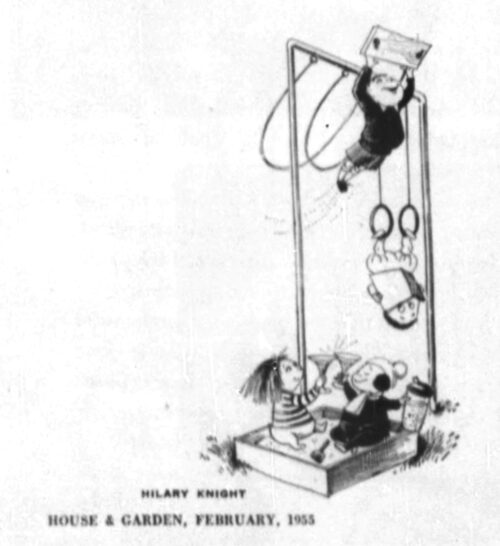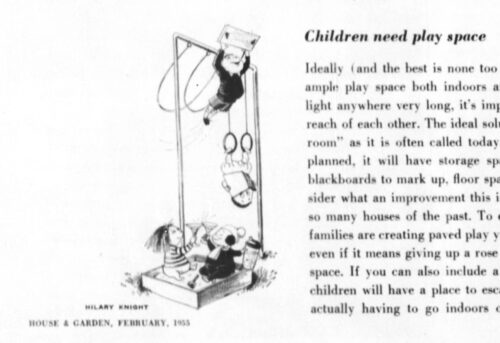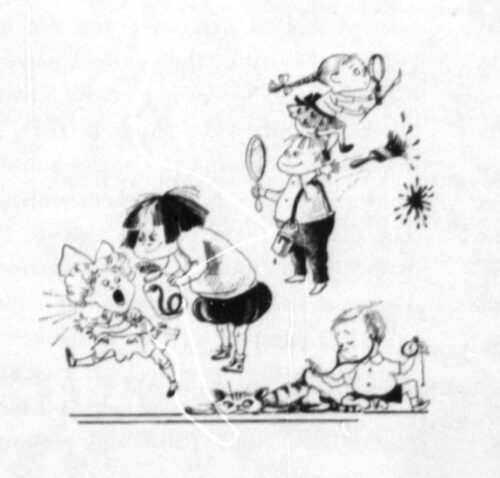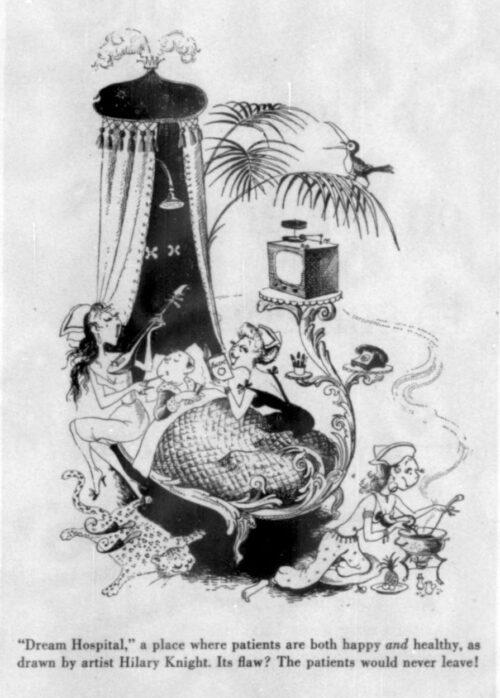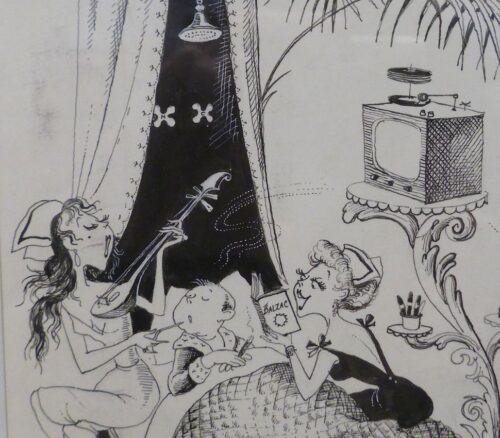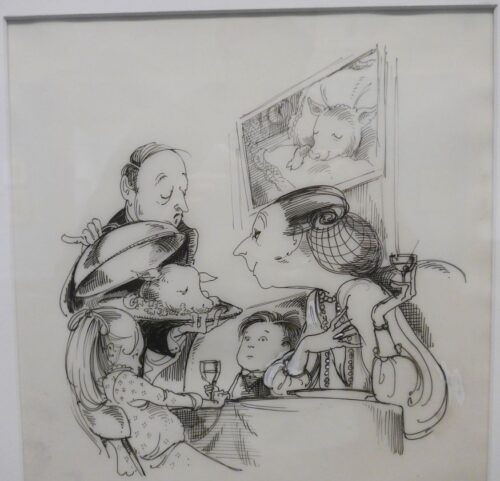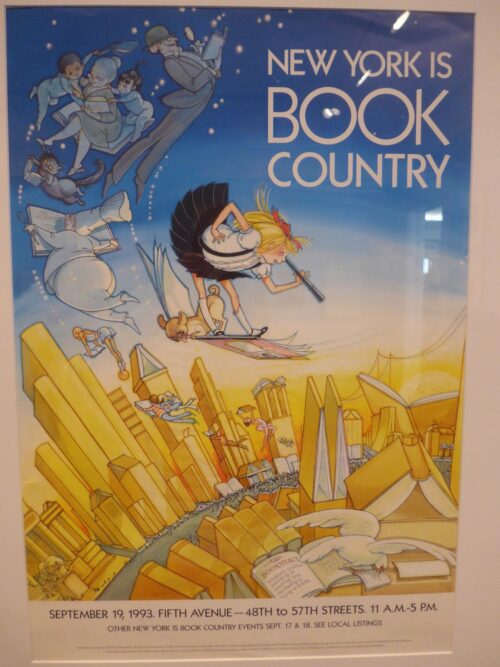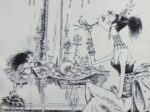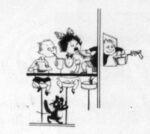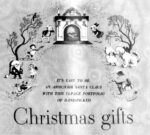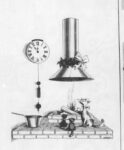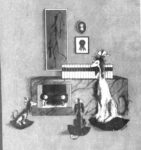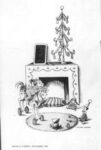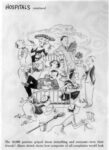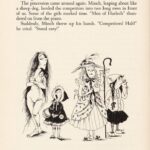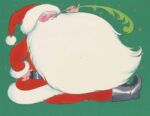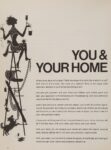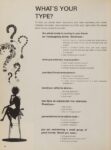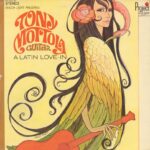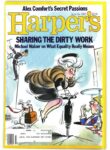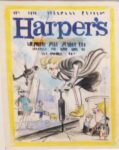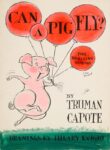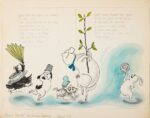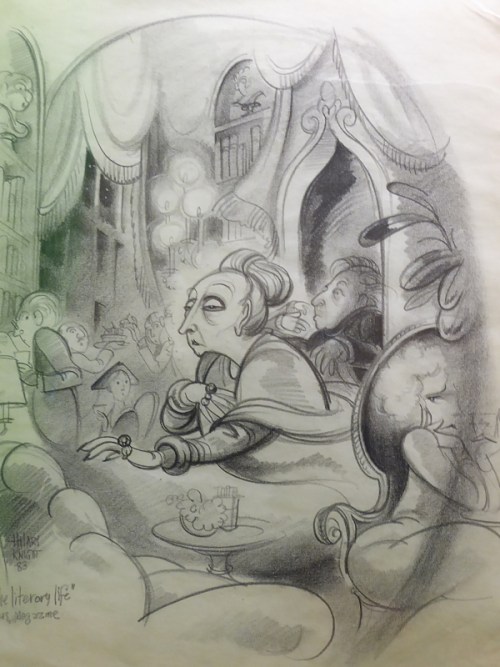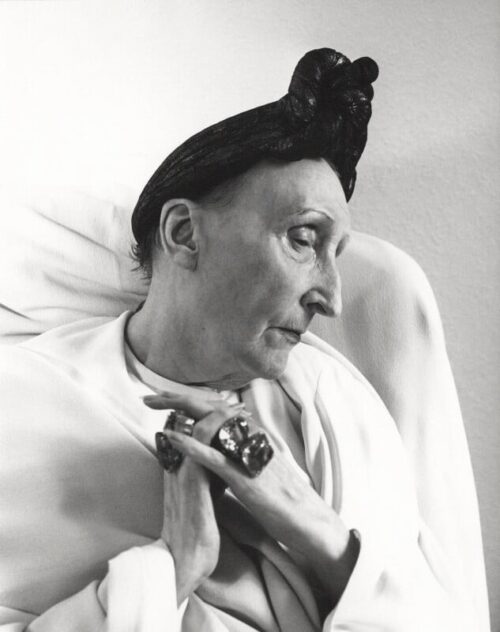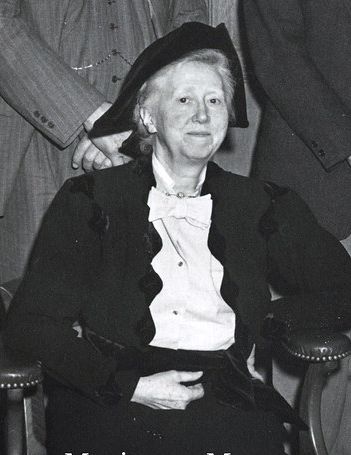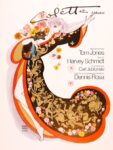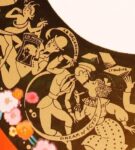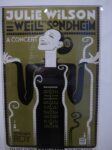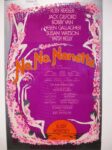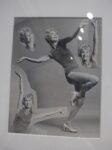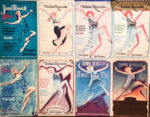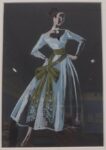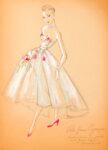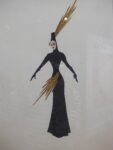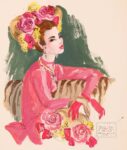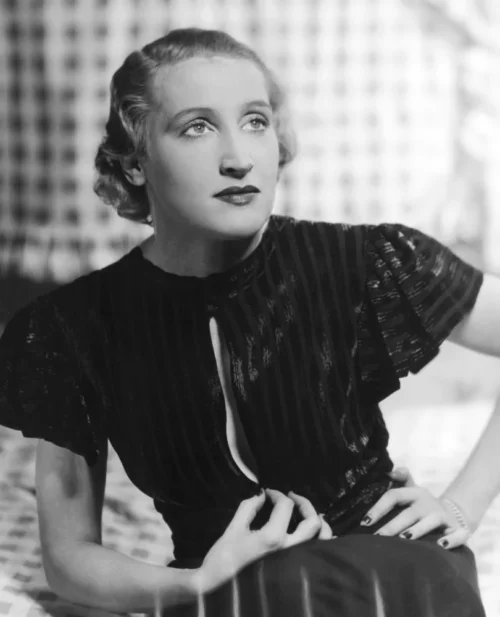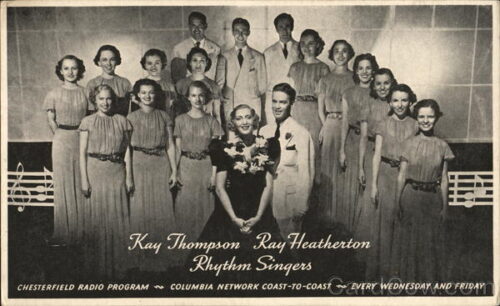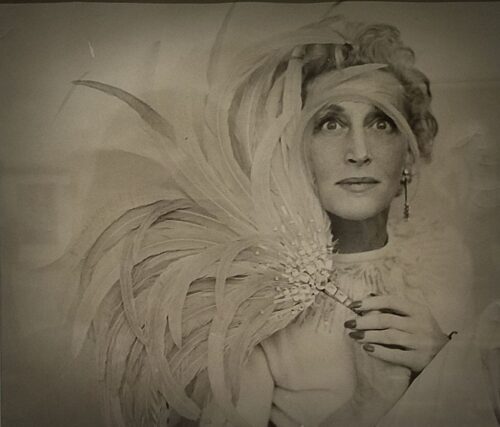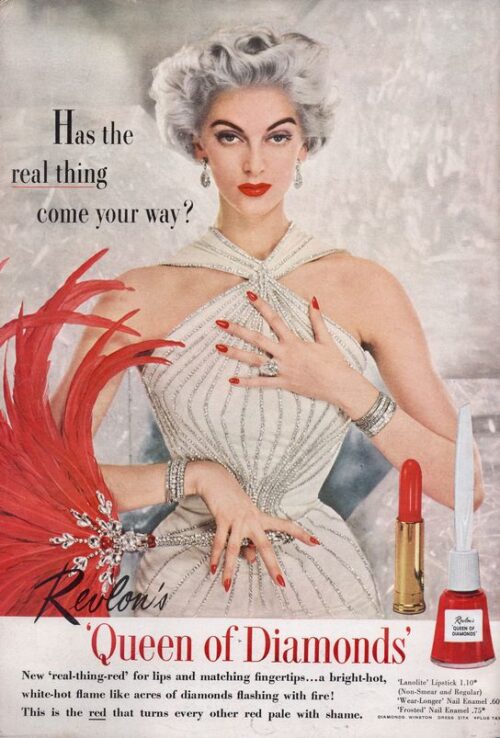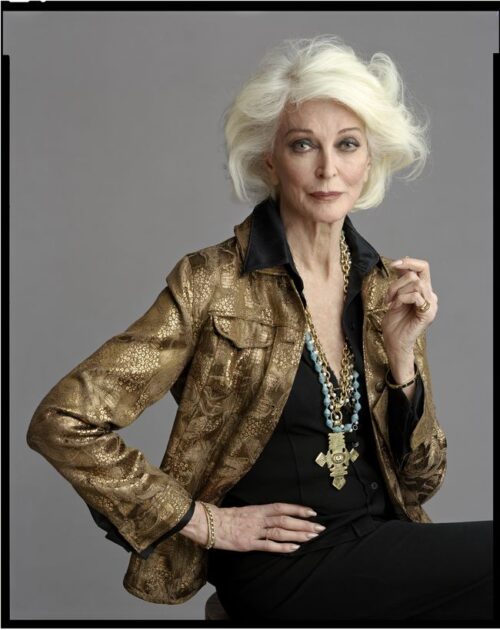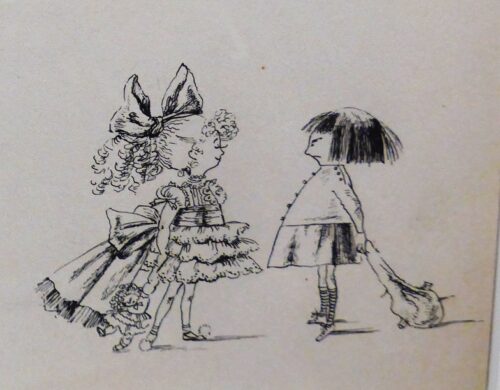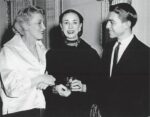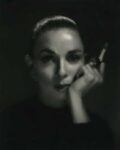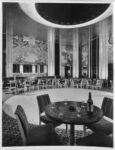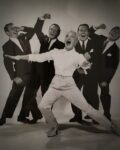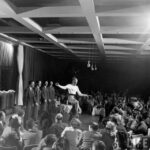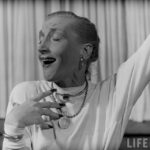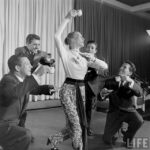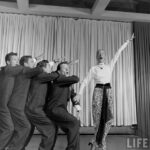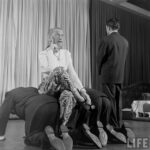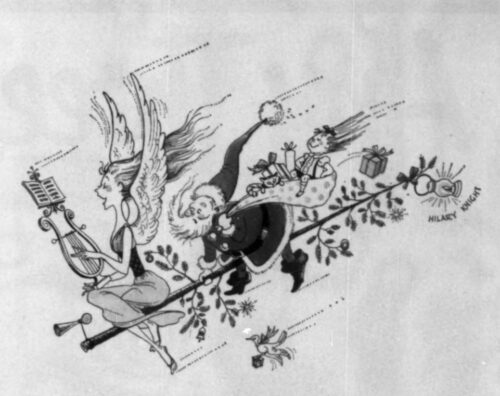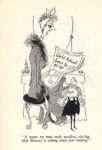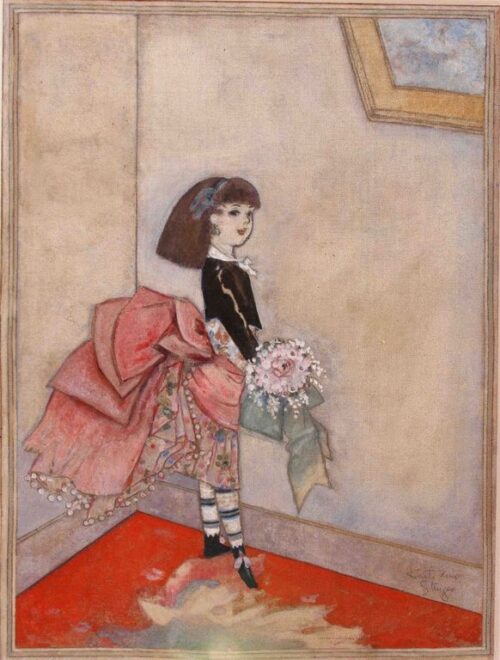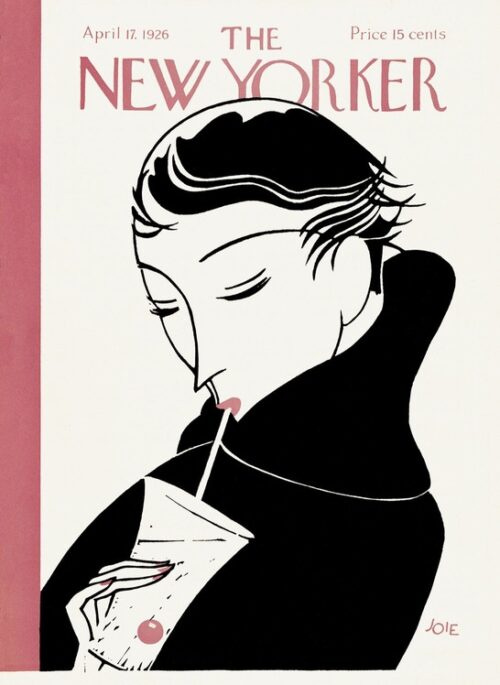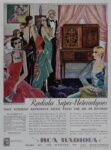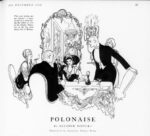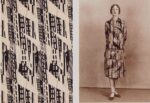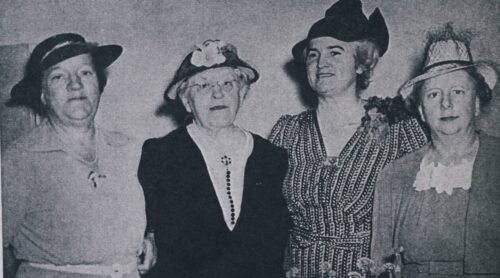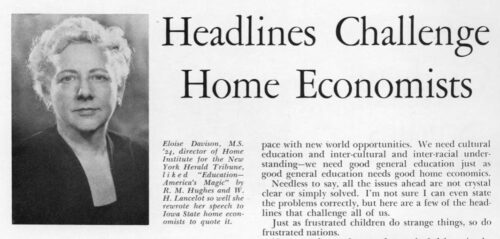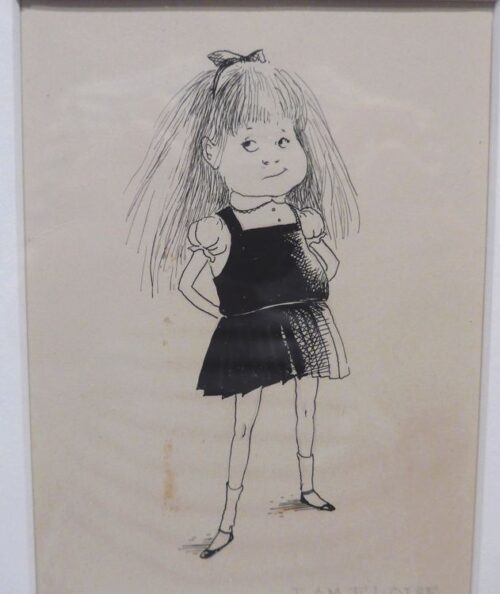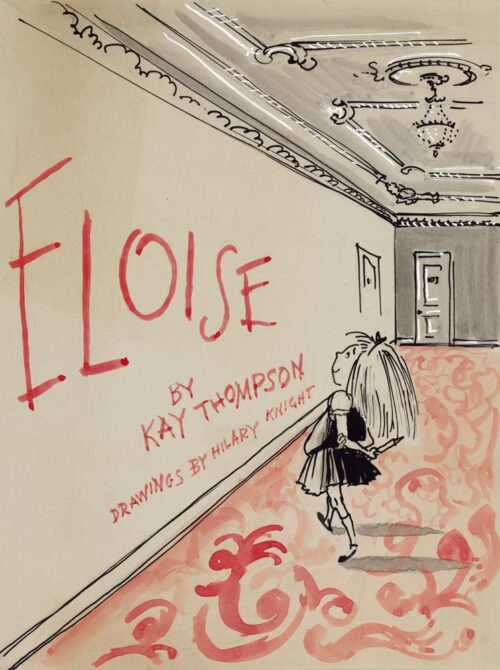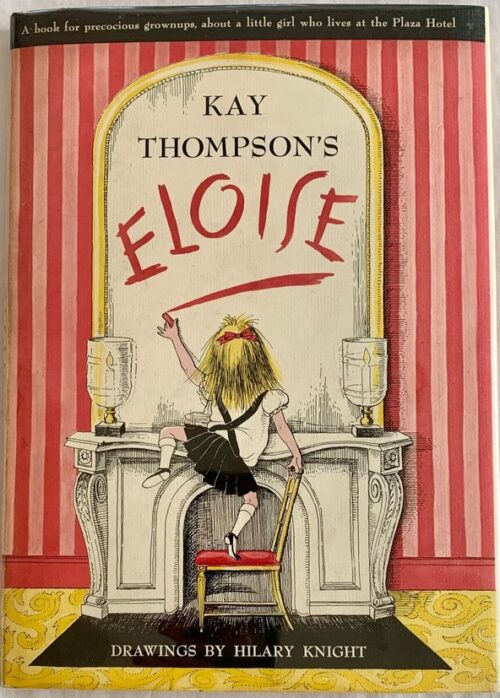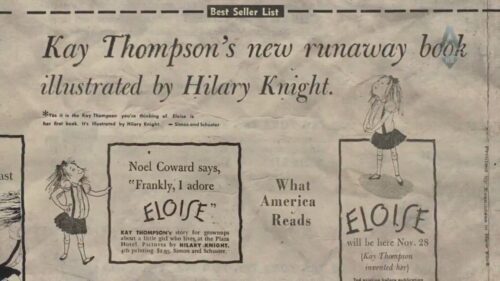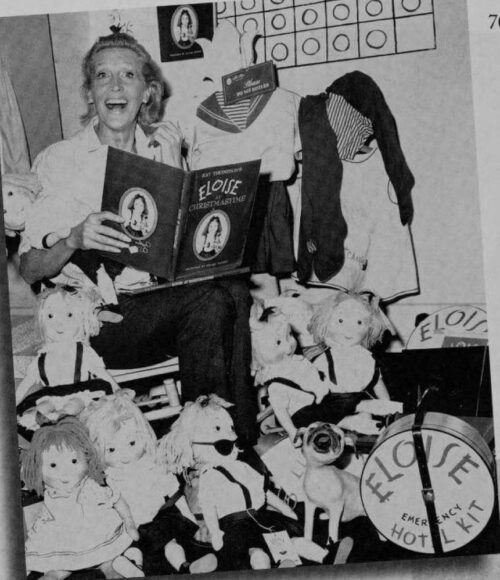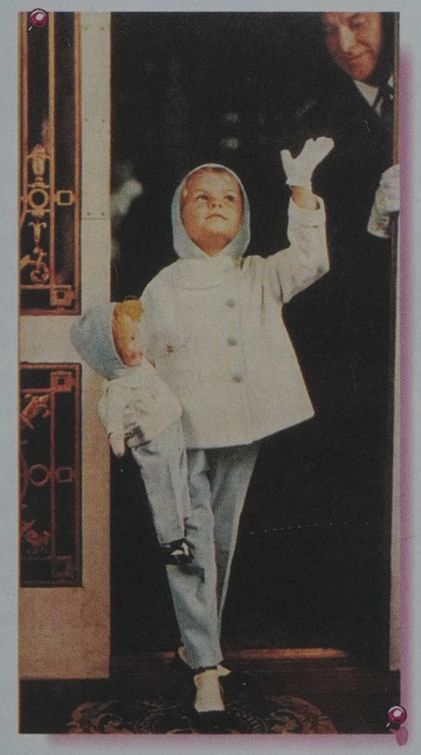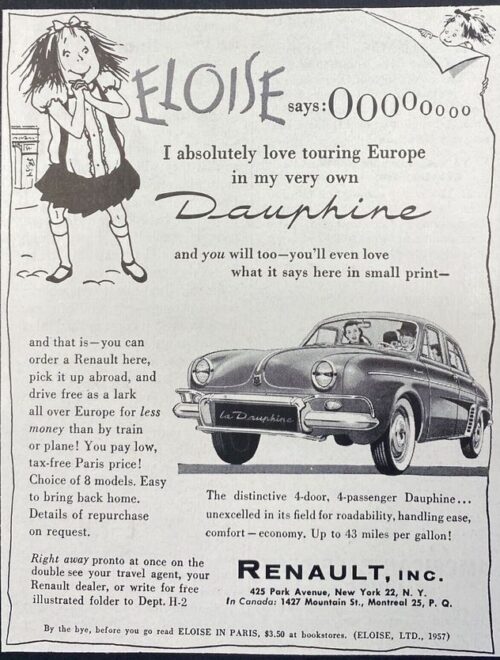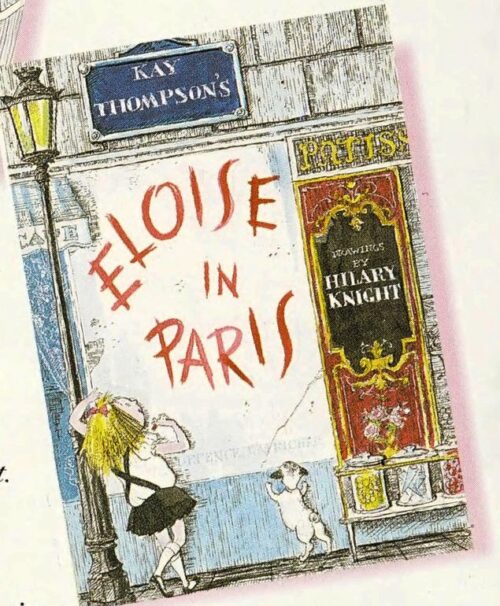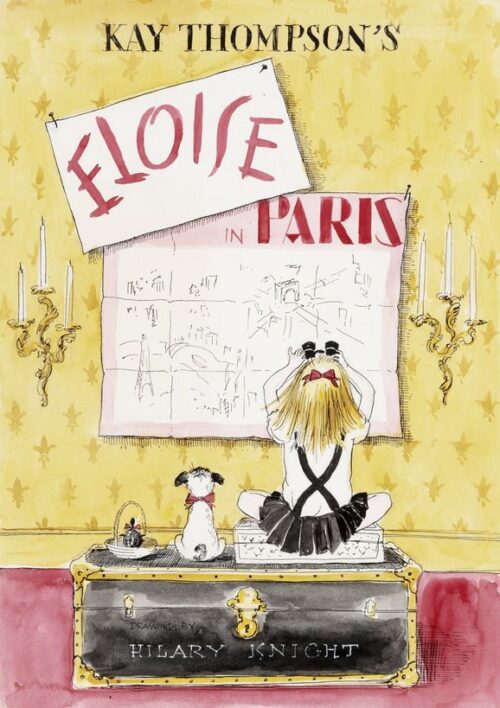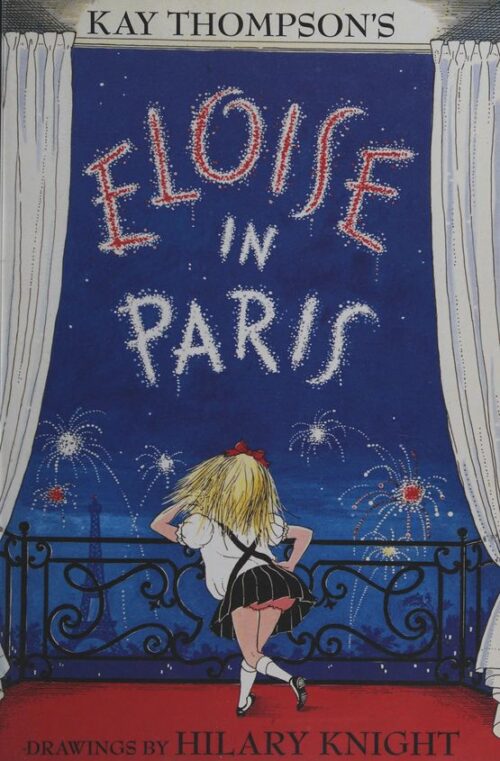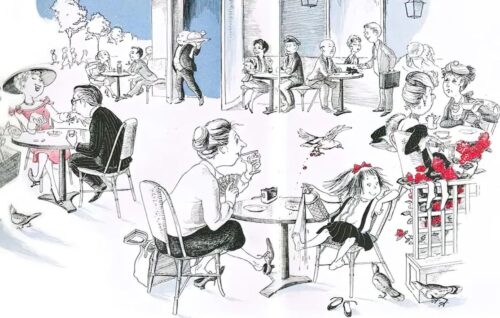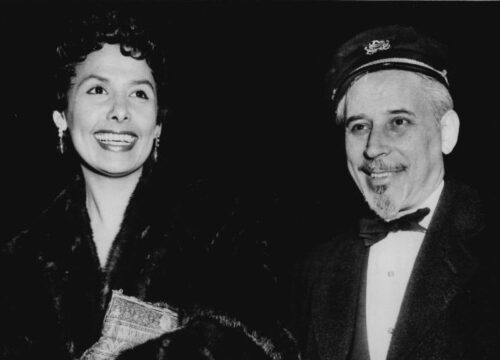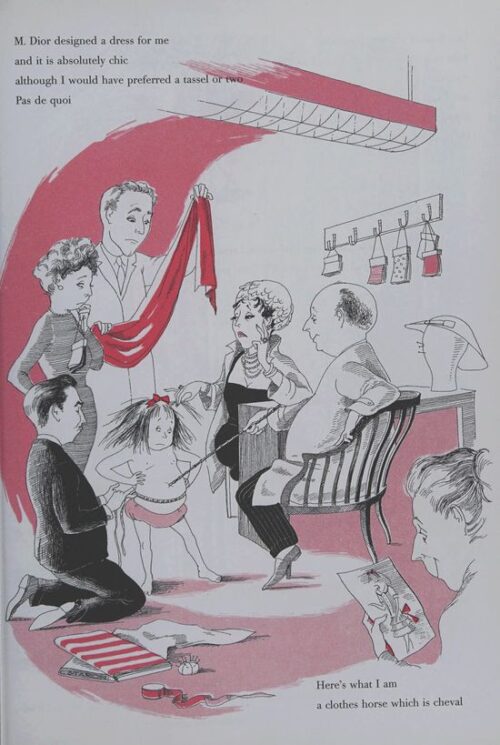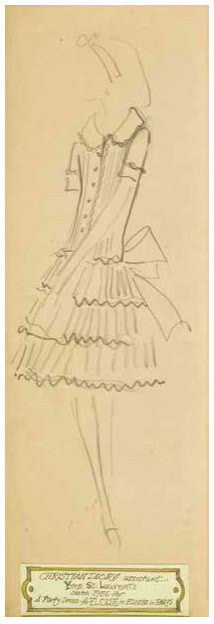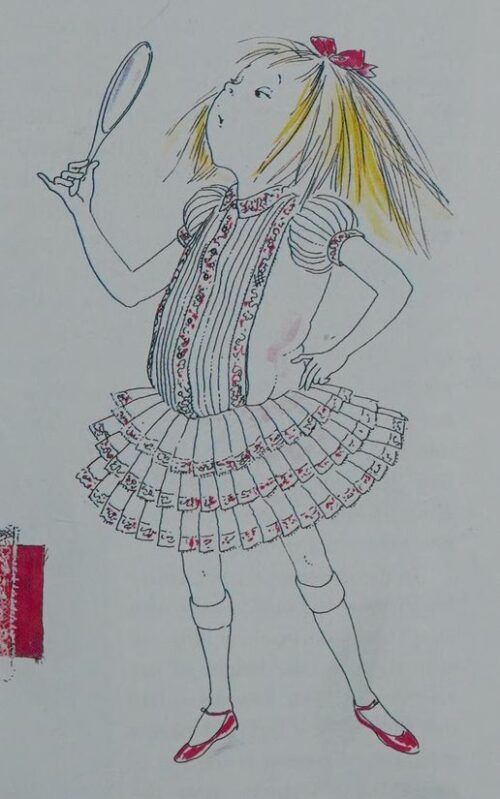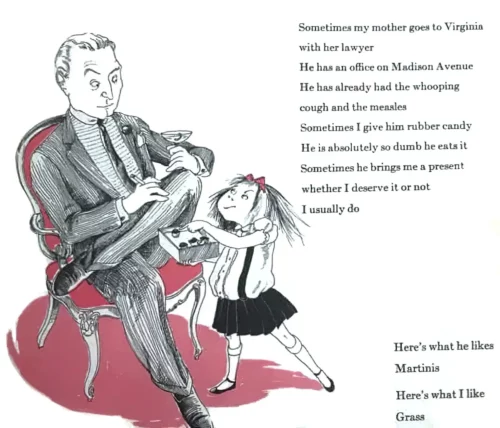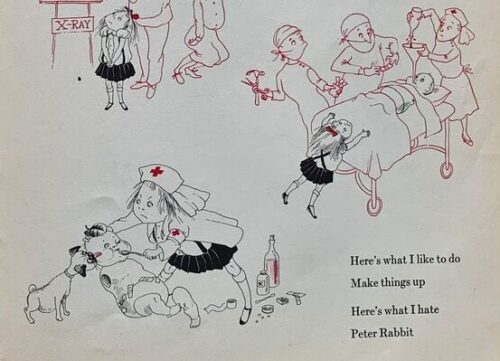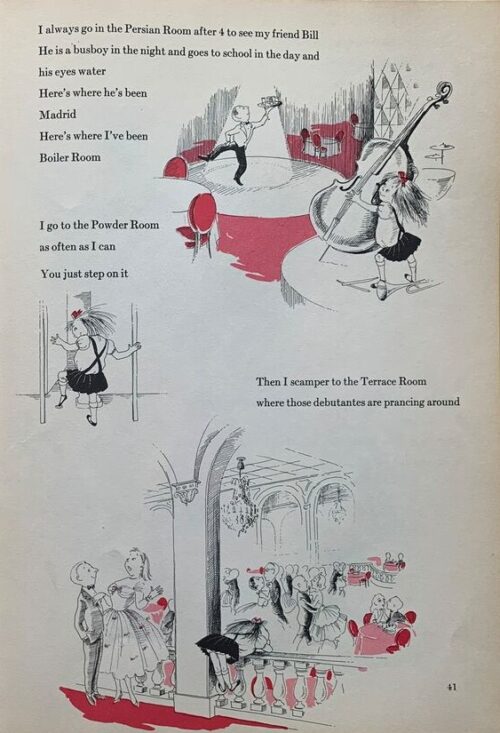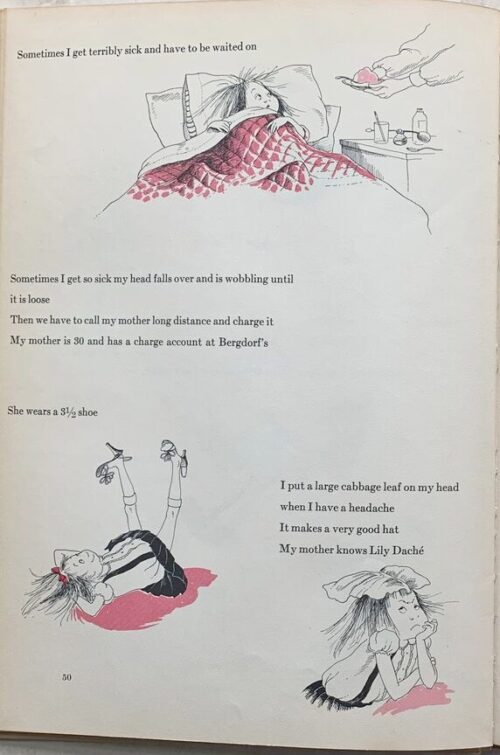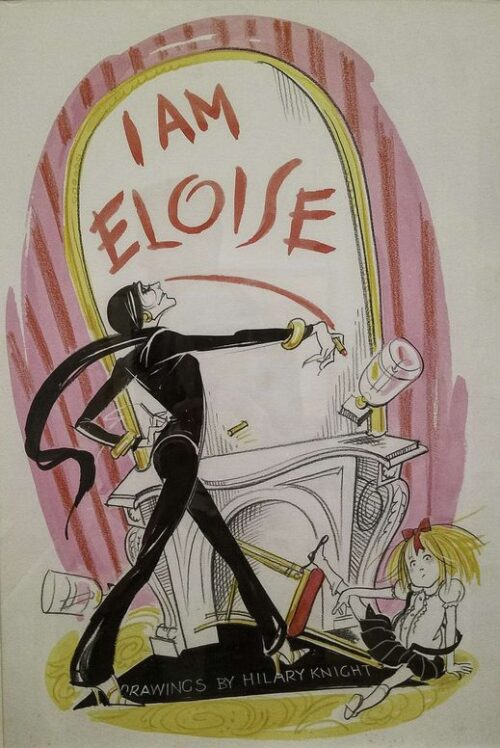“I’m so used to people not knowing about anything but Eloise. That sort of disappoints me.” – Hilary Knight, illustrator of Eloise
Here’s my collection of seldom-seen illustrations by Hilary Knight, who drew the pictures for the Eloise books and turns out to have had a long career as illustrator for magazines, books and posters, along with pictures from the fascinating history and background of Eloise, also seldom seen. It all shares the droll, quirky wit of the Eloise books, making Knight one of our most inspired illustrators.
Some of what’s here I saw at an exhibition at the Normal Rockwell Museum in Massachusetts and had only been published once, ephemerally, such as in magazine articles, before completely disappearing from view; others are never-published drafts and other rarities from the exhibition. Still others I dug up myself in online libraries and auction catalogues. Altogether, very little of it has ever been gathered all in one place.
Also I’ve pulled together the first-ever collection of all the material from the first Eloise book which was published in 1955 but underwent revisions in the 1980s, when it seems to have been decided that certain parts that were acceptable for children when first published in the 1950s were now too racy, such as toilets, cannabis and poking fun at Peter Rabbit. As fas as I know the changes have only been mentioned once or twice in print and never all together in one place .
Click to enlarge. Arrow-key to proceed to next photo.
Besides Knight’s work, the other revelation of the exhibition was a few tantalizing hints about the extraordinary and little-known history of his co-author Kay Thompson, who created the Eloise character and wrote the words. If you’ve seen the movie Funny Face with Audrey Hepburn and Fred Astaire – Kay is the co-star, playing the fashion magazine editor. Afterwards I got drawn into months of exploration where I learned she was one of the most creative, influential and fascinating – not to mention stylish – performers and musicians of the twentieth century. But because she made few records or movies she’s been almost completely forgotten except among Broadway and Hollywood history insiders, for whom she’s in the pantheon of greats.
Thompson was Liza Minnelli’s godmother and close friend of her mother Judy Garland. As vocal coach to Judy, Lena Horne, Frank Sinatra and many others she had a major role in shaping their sounds as we know it. As vocal arranger she revolutionized how numbers were performed in movie musicals and live shows and had a lasting influence on the dynamic performance style that is so universal now, hardly anyone can imagine it wasn’t always this way. New York Magazine called her “a skeleton key to mid-century Broadway and Hollywood”; for Michael Feinstein she “changed the face of American popular music in the 20th century”; for Liza she was “the greatest person ever at MGM” and had “the greatest nightclub act that had ever been seen”. If you’ve ever seen a musical on stage or screen or even a music video you’ve almost certainly heard or seen a Kay Thompson influence.
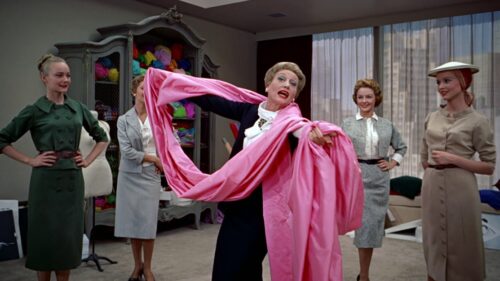
As a singer on radio and live she was a household name from the 1930s through 50s, yet strangely made few records. She was only ever in two movies besides Funny Face, both minor, and yet it’s generally agreed her showstopping performance in Funny Face outshines Hepburn and Astaire, an unthinkable achievement. She was the first female performer to routinely wear pants and arguably did more to popularize them than Coco Chanel. She organized Kennedy’s inauguration concert and the first-ever fashion show of American designers in France. Have I convinced you that Kay Thompson is a huge deal?
The Kay story will have to wait for another time though. For Knight here are some favorites from his work for women’s and family magazines in the early 1950s
In 2009 Knight drew Le Veau d’Or (golden calf) for an installment of “Hilary Knight’s Sketchbook” in Vanity Fair magazine which depicted renowned long-closed New York restaurants of the pre-WWII era. They really did serve calf’s head and had a painting – which children are said to have loved – titled Le Veau Dort (the calf sleeps), a pun on the restaurant’s name.
Poster for New York is Book Country (1983), a festival held from 1979 to around 2010 on ten blocks of Fifth Avenue that were closed to traffic and which seems to have been a pretty big deal. I tried to find out more but there’s essentially no mention of it anywhere online apart from vendors selling the posters and one blog post from 2011. I think it’s because Google Search has become so crappy it just can’t find anything other than shopping any more.
Books, magazines and advertisements 1955 to 1983
Sketches for a children’s book by Truman Capote. In 1957 Random House and Theodore Geisel (Dr. Seuss) commissioned books for beginning readers from renowned authors. Capote was one of several who began but never completed the project due to constraints such as being limited to a fixed list of 100 words.
The writer Edith Sitwell, one of England’s grandest eccentrics, for Vanity Fair in 1983 (she had died twenty years earlier). “This is a favorite drawing” said Knight. “I do not do very good likenesses but you can’t go wrong with Edith.” Her brother Osbert, also a writer, and poet Marianne Moore are also visible. One of Edith’s many eccentricities was her outrageously large rings.
Theater posters
Knight has said the first one, for Come Summer, is one of his favorites. He didn’t say why but I would guess it has something to do with how it handles the many difficult requirements that theater posters have to meet, which he mentions in interviews: they require much more text than other kinds of posters; the relative sizes of the various names are strictly dictated; they have to look good as a small newspaper ad as well as a large subway poster. He solved the problem by making a poster-within-poster which faithfully recalls 19th-century posters and handbills, and you could argue the dynamic figure reads well from a distance and relates to the frame better than in most posters, or that the colors and shapes would work well in both large and small sizes.
Fashion figures
The drawings Knight calls fashion figures were made purely for their own sake and weren’t used in fashion magazines, advertisements or for designing clothes to be made.
Eloise
What is there to say? The fandom is overwhelming and inexhaustible. She’s now a sort of one-person mini Disney empire of children’s books, merchandisa and movies. The story of her origins, which began decades before the books were written, surfaces in the media every few years but has only ever been accompanied by scant visual records so you could actually see the inspirations, influences, sources and people involved. So that’s what I’m doing here. Remember how DVDs had booklets and Bonus Extras with behind the scenes footage? This is the Eloise Deluxe Edition DVD without the DVD.
But first, just for the record – I don’t know what it is but there’s something about Eloise that seems to make people think she speaks uniquely to them and that the goofy yet patrician quirkiness is a special bond that only they share, even though millions of other people are thinking the exact same thing. This is not uncommon for children and their books but quite a few adults feel the same way, apparently. “Eloise was not allowed to belong to anyone else. I truly believed that I owned her”, as one Eloise chronicler puts it, but a lot of the commentary conveys this in the present tense.
Thompson understood this phenomenon and hated it. A typical example is a story she told about Elsa Maxwell, the era’s preeminent gossip columnist and hostess to high society, who’d become spectacularly rich and powerful by embodying the exact opposite of the quirkiness and everything else that Eloise stands for, namely, by dictating conformity to strict social rules. As Thompson related with scorn and frustration, “The book was out one day when Elsa Maxwell left a note that said, ‘Dear Kay Thompson. How did you know that I lived at the Plaza?’ And that is exactly what has taken place. The idea of these people playing child!”
And so the origin story in chronological order: Eloise first surfaced twenty-five years before the book was published, when Thompson was around twenty…
1930s – Kay Thompson creates an Eloise character – Starting in her youth Kay Thompson (1909-1998) sometimes adopts a humorous alter ego of her own invention named Eloise, a precocious headstrong six-year-old with a distinctive raspy voice, to amuse her friends and occasionally to apologize for some misstep, or to admonish others for the same.
When reporters and a biographer finally rescue Thompson in the 1990s and 2010s from more than thirty years of oblivion, friends and associates relate how she might lapse into the character when she was a summer camp counselor or running music rehearsals for radio shows, or just entertain friends by calling them and announcing “This is Eloise!” in “that funny little voice”.
early 1950s – Knight is just starting out as an illustrator, a couple years before meeting Thompson, and lives across the hall from a Harper’s Bazaar editor named D.D. Dixon, who borrows jeweled fans he’s made and uses them in a photo shoot of Thompson with the photographer Avedon, the first, very indirect, connection between her and Knight. In the end, Bazaar didn’t use the photos. They were published anywhere else to my knowledge but this one was displayed in a Knight exhibition in 2017.
Other photos using his fans are published in cosmetics advertisements with Carmen dell’Orefice, who at age 92 is currently the oldest working fashion model, with a career spanning some 70 years.
1954 – The idea for a book – Knight occasionally slips humorous drawings such as these under Dixon’s door, some of which match Eloise’s spirit by pure coincidence since he’d never met Thompson at this point. (Dixon was known for most of her life by her married name D.D. Ryan.) When Ryan sees the one on the left she realizes a book collaboration was meant to be. “After years of carrying on phone conversations with Eloise as if she were a real person”, recounts Thompson’s biographer, “D.D. finally blurted out, ‘Look Kay, Eloise is a book.’ ‘There’s nothing to write about,’ Thompson replied. ‘It’s just fun.'” Ryan persists though, and as Knight told the New York Times in 2007. “The book would never have existed without D.D. Never. Kay would have just dropped it and gone on to something else.”
Ryan will later work for figures such as Avedon and Halston, design costumes for Sondheim’s musical Company, and be renowned for her style in fashion and social circles and at Studio 54.
December 1954 – Knight meets Thompson at the Persian Room at the Plaza – To introduce the two in hopes of them writing an Eloise book, Dixon takes Knight to see Thompson perform at the Persian Room nightclub in New York’s Plaza Hotel, where she lives rent-free on account of the publicity value – that’s how big a deal she is. These rare photos document her show some years earlier, in 1947 at Ciro’s in Los Angeles; I can’t find any of the Plaza show. At that time was the first live singer ever to integrate backup singer-dancers and choreography, which she enabled by having multiple microphones hung above the stage. Prior to her vocalists just stood at a single microphone so with this breakthrough Thompson changed live performing forever.
Here is Knight’s very first depiction of Eloise, on a Christmas card he sent to Thompson shortly after their meeting at the Persian Room, with Thompson as the angel. It’s one of my rarest finds and this is the first time it’s been published or reproduced, as far as I can find, since appearing in McCall’s in 1957 on the occasion of the publication of the second Eloise book, Eloise in Paris.
Eloise’s look – the inspirations
The most renowned predecessors of Eloise are the cartoons from the late forties and early fifties by the Briton Ronald Searle of a fictitious girls’ boarding school called St. Trinian’s and its gleefully violent and debauched students and blasé schoolmistresses. Immensely popular, they spawned a series of movies which together with the books are among the best of British postwar humor.
Knight’s parents were highly successful illustrators, so much so that his mother was mentioned in 1930 in a career advice book for young women as though everyone knows who she is. He cites two of their works as key inspirations for Eloise. One is a painting by his mother of a little girl: “I grew up with this. This is the actual inspiration for Eloise… It was a picture of an alluring creature in complete control of her domain. Twenty-five years later, this image would translate into the visual of Eloise”. The other major inspiration was a New Yorker cover his parents had jointly drawn in 1926, which gave him the idea for the pink-and-black color scheme. This was the first and only time in the magazine’s first couple of decades that the cover had a spare, simple, clean drawing style (as opposed to a busier, multicolor brushy painted look; note also the Japanese woodblock print influence) and the first time the drawing covered the title.
Eloise’s appearance is also based on a family friend named Eloise Davison – the name being sheer coincidence since this was Knight’s family, not Thompson’s – a home economist and food writer who’s been described as “a small bird-like woman with pixie-ish looks”, “a funny, pudgy little woman with messy hair” and “a roly-poly little woman with this very bizarre hair that went straight out in various uncontrolled angles.” Knight sought to capture what she’d have looked like at age six. The available pictures only convey the faintest hint of all this but I’m including some anyway since photos of Davison have never appeared in the many articles on Eloise and Knight.
Left to right: early drafts of Eloise and front cover; front cover as published
1955 – Kay Thompson’s Eloise is published after being rejected by many publishers who didn’t know what to do with it, and is a smashing overnight success and media sensation. Thompson has been a glamorous celebrity due to her music and Hollywood career for some time before the book’s publication. There has never been this kind of publishing milestone from an entertainer before or since.
She insists on having her name in the official title, that is, Kay Thompson’s Eloise is the actual title and not just the way the cover is designed. The subtitle “a book for precocious grownups” is not an ironic joke: Thompson intends the book to be for adults, not children, and struggles to have bookstores put it in the adult section, which they always refuse to do. Advertisements emphasizing Thompson (“the Kay Thompson you’re thinking of”) reveal how much name recognition she has and include luminaries such as Noel Coward among her fans.
The merchandising juggernaut – Eloise is probably the first book to have a saturation merchandising program, with dolls, toys, clothing, luggage, a record, wigs and more. She becomes a spokesperson for Renault cars. Here’s just a small selection.
1956 – Eloise on TV – An adaptation of Eloise is presented live on Playhouse 90 with an unknown in the title role. Thompson performs three numbers including a showstopping “3 a.m. in the Persian Room”. The choreography is inspired and zany – Kay rides a laundry cart and a vacuum cleaner, jumps up on a table and is carried around on a serving platter. The lyrics about a nightclub after it closes are the height of smart, off-kilter urbanity. The show is a technical marvel as the scenes move between Eloise’s apartment, the balcony, lobby, hallways, nightclub and basement yet it was all performed and broadcast in one live take. Sadly, Thompson’s speaking role is small and critics were unanimous (and correct) in saying the show overall is an awful, unwatchable failure due to a bloated and tedious romance story involving characters that aren’t in the book at all and painfully boring songs sung by other people. Thompson had no say in any of this.
1957 – Kay Thompson’s Eloise in Paris is published, again with Thompson’s name in the official title. A full account of its creation appears in the Thompson biography and a few articles so again here are just some rarities.
L to R: two early cover drafts, the first conveying a bit of the grit and decay that used to accompany the elegance in Paris but are completely gone now; and the final cover.
Knight included famous people in the books without mentioning them. In the background are Lena Horne, who always said Thompson’s vocal coaching made her the singer she was, and her husband Lennie Hayton who was the acclaimed arranger and music director for such musicals as Singin’ in the Rain and Hello Dolly, and incidentally was white and Jewish.
The scene at Christian Dior includes an accurate likeness of Dior himself dictating a design the way couturiers often did – verbally, with a stick, while assistants draped and pinned and fetched fabric samples – along with Yves Saint Laurent (standing) who was his assistant at the time and is not named in the book. In the corner Eloise’s nanny is holding s sketch that Saint Laurent actually made for Thompson and Knight following Dior’s instructions, as was customary. This sketch was auctioned off in 2018. Knight made a drawing of Eloise wearing the dress but it wasn’t used in the book.
1958 – Kay Thompson’s Eloise at Christmastime published
1959 – Kay Thompson’s Eloise in Moscow published
These are the last Eloise books that Thompson wrote.
1961 – Thompson shuts down the whole Eloise enterprise
Around 1961 Thompson bans all further reprints of the books, all production of Eloise merchandise, and any other uses of the character, except that she allows the first book to stay in print. From this time until her death in 1998 no Eloise items are available for sale apart from the first book. This is yet another fascinating story that I’ll have to cover elsewhere.
1980s – Eloise gets sanitized
Starting in 1983, printings of the first book contain a number of revisions that appear to be intended to purge material deemed morally unsuitable for children, which is really saying something if 1950’s America was considered debauched. The pages below are as they were from 1955 to 1983.
-
- “Here’s what I like / Grass” – changed to “Here’s what I like / Dandelions”
-
-
-
- “My mother knows Lily Daché” – changed to “My mother knows Coco Chanel”. Not only a glaring anachronism but wildly conflicting with Thompson’s style. When Eloise was being written, Chanel was 72, her house had been closed for sixteen years (it would reopen shortly before Eloise’s publication), and she was irrelevant compared to important couturiers of the time such as Fath, Balmain, Dior, and Balenciaga. At one point during the Eloise years Thompson is said to have demanded that a jacket for a television appearance be “Balenciaga and definitely not Chanel.” Lilly Daché (misspelled in the book!) was a chic high-fashion milliner of French birth who had had a salon in New York for some time.
-
-
-
-
- Eloise portrait replaced – In 1999, the large drawing of an exuberant, exultant Eloise on the last page of Eloise at Christmastime was replaced by a humbler, much smaller one and a new scene of the hotel staff with their Christmas presents was added. I discovered a mistake in the explanation of this change that appeared on a label text in the Knight exhibition in 2022. According to the label, in the original book “the closing page depicted Eloise showing off all of her Christmas presents”, which is not the case. There was never a scene of Eloise showing off presents or getting any at all, whether at the end or anywhere else, with the exception of a “diamond necklace of trinkles and glue” from Nanny that she gets earlier and can also be seen on the original last page – clearly a thrifty, homemade present and the opposite of extravagant. In fact the book has always had a substantial passage in the middle that goes into detail about the presents Eloise gives to a dozen different staff members and which are seen again on the last page.So although it’s true the new ending reiterates the generosity and kindness on the part of Eloise that were communicated earlier in the book, she didn’t appear particularly greedy in the original ending, or least no greedier than she does anywhere else.
-
-
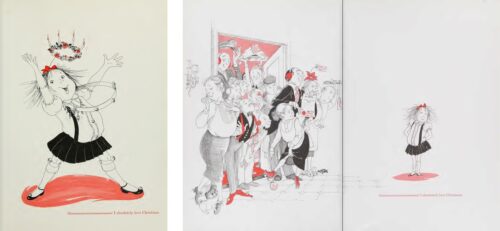
Later years
Cover of Kay Thompson’s Eloise, 1955 Satire by Knight for Vanity Fair, 1996 In 1996 Knight drew a scathing satirical re-creation of his cover for the first Eloise book. Thompson, dressed as she often did in the late 1960s through 80s, has knocked Eloise off her chair in order to proclaim with lipstick on the mirror who the real Eloise is. It accompanied a Vanity Fair article which was the first-ever attempt to tell Thompson’s story and rescue her from the near-total oblivion into which she’d fallen. She hadn’t been seen in public or interviewed since the mid-eighties and was living with Liza Minelli.
Two years later, Thompson would die, leaving unrestricted rights of Eloise to relatives. Something of an Eloise Industrial Complex quickly arose with twenty-odd sequel books that haven’t involved her or Knight, CDs, movies, toys, and at the Plaza, a black-and-pink ball with a two-story inflatable Eloise in front, and an all-pink Eloise suite with zebra-print carpet, lit by ELOISE in neon letters.
The drawing sums up the entire complicated situation in which Thompson had walked away from the Eloise phenomenon at the peak of its popularity thirty years prior and never got involved with it again. It had soured. She found the mass Eloise frenzy boring, crass and kitschy. But beyond that she was by all accounts resentful and for good reason. She resented that millions of strangers were convinced they were real, true Eloises when she and decades of close acquaintances knew that Eloise’s essence was really Kay’s essence. She would have considered it loathsome, cheap sloganeering when the curator of an Eloise exhibition at the New York Historical Society in 2017 gushed, “She’s such a New York girl. She’s a role model for anyone who is feisty and has an imagination and wanted to do what she wants to do!”
There was only one person who had made so much out of the Eloise “role model” and that was Kay, with her many trailblazing careers. To have millions of anonymous people claiming such individuality, flair and genius when there wasn’t much sign they really had it seems to have struck Kay as not just annoying but presumptuous, insulting and self-serving, and you have to admit she had a point.
